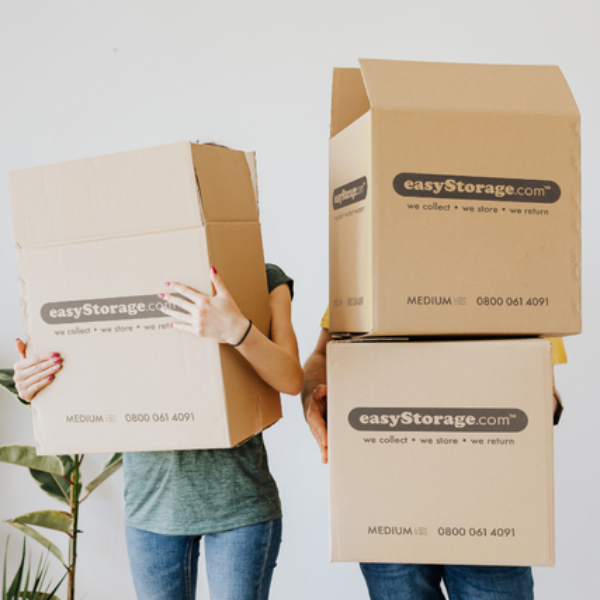Easing the Load: The Expert's Guide To Lifting Boxes (Part 2)
We're back with part 2, for all the lifting tips and tricks you could ever need for moving or packing for storage. Obviously at easyStorage loaders are all properly trained but customers often aren't, so we thought we would share our advice!
THE ITEM(S) BEING LIFTED
Balance your load
The foot stance we mentioned previously will give you more stability and make it less likely that you’ll fall.
A small space between you and what you’re lifting will give your body the space to lift.
Hold the box or object at or near the bottom or at its heaviest point. This will give you more control over the weight.
If moving something long/oblong shaped, like a dining table or sofa, as far as possible lift along a long edge – towering objects are more likely to fall and will be harder to carry.
When you take hold of the load, ensure the weight is evenly distributed between your hands with a good firm grip. Until that grip is as firm as it can be, don’t move it or you’ll drop it, and if you are lifting with someone else, try not to pressure them. Rushing will cause mistakes and delays!
Find sturdy handholds that you can easily hold onto. Aim to hold the object near the bottom or by its heaviest point so you can easily control the weight. Make sure you have a firm grip so the object doesn’t slip out of your hands
Never try to carry boxes/items with just one hand, and use anti-slip gloves for a better grip if needed.

Moving things with moving parts
If you are moving things with wheels or other moving parts, try and immobilise them before moving.
This will stop things (including clothing and hair, and even fingers!) being trapped or caught in moving parts.
If what you are moving is liquid, especially if not full to the top, don’t balance it on top of anything to move it, and if it has any kind of weight to it, try moving even mid-sized objects with someone else – moving liquids don’t balance well and can knock you off balance. Similarly, if items are not tightly packed in boxes, they can roll around creating the same effect.
Move things to smaller boxes or stuff the space well to avoid this effect.
Pack heavy things in smaller boxes
Keep lighter weight things like quilts for big boxes, and pack books etc in smaller boxes that will be easier to carry.
Mark anything particularly heavy when packed, so that it’s not a surprise when lifting later.
MOVING AROUND WITH A LOAD
Plan your route
Plan your route before you start moving things. Include measuring widths of door frames and corridors. It’s far better to take a while out to make a plan than to be stuck halfway down the stairs with a wardrobe in between you taking the strain of lifting, having to take it back AND increasing the risk of twisting.
Walk slowly
Keeping your legs slightly bent, take small steps so you keep control.
Keep your eyes in front rather than looking down at what you’re carrying.
If you are carrying any distance, plan a short break at the halfway point to rest and readjust - you can always put the object on top of something else to make it easier to lift.

Changing Direction
Use your feet to change direction when lifting, taking small steps (shuffling) and keeping your solid base.
Your hips should lead as you change direction and your shoulders should be in line with them as you move.
And, of course, avoid twisting!
Putting things down
Put things down slowly and carefully - squatting again, using the knees and hips only.
Make sure the box’s base is fully on the ground before letting go.
And, did we mention? Avoid twisting!
